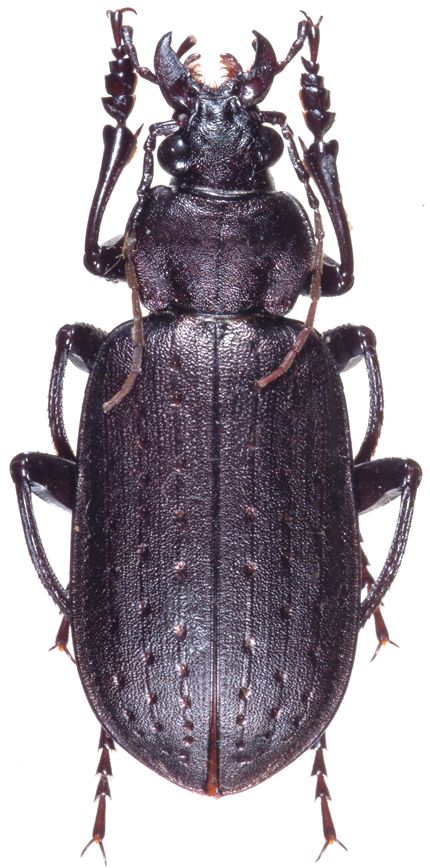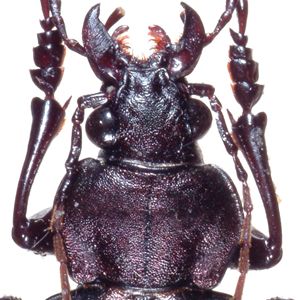| Ecology |
flatland (Yamaguchi museum 1988, East Japan Research Group of Carabid Beetles 1989, Ishitani 1996), field and grassland (Inoue 1952d), Paddy levee (Inoue 1974c, Inoue 1975a, Inoue 1976a, Inoue 1977a), farm field (Inoue 1979a), crop feild (Inoue and Hanada 1979), bank (Kinki Research Group of Carabid Beetles 1979), seaside (Suga 1981), low mountain region (Suga 1981), mountainous area (Yamaguchi museum 1988), wilderness (East Japan Research Group of Carabid Beetles 1989), crop land (Kuwayama and Oshima 1964, East Japan Research Group of Carabid Beetles 1989), waste land (East Japan Research Group of Carabid Beetles 1989), slope of mound (Sunose 1992, Sunose and Kurosawa 1992), fallow field (Sunose 1992, Sunose and Kurosawa 1992), fig orchard (Ishitani and Yano 1994), forage crop field (Ishitani et al. 1994), Betula ermanii forest (Kimoto and Yasuda 1992a, Kimoto and Yasuda 1995), riverbed (Kinki Research Group of Carabid Beetles 1979, Yahiro et al. 2001, Carabidological Society of Shiga 2003, Yahiro 2008, Lee and Ishii 2009, 2010), urban park (Kinki Research Group of Carabid Beetles 1979, Lee and Ishii 2009a), grassland (Kuwayama and Oshima 1964, Kinki Research Group of Carabid Beetles 1979, East Japan Research Group of Carabid Beetles 1989, Hori 2001), newly grassland (Kinki Research Group of Carabid Beetles 1979), Quercus crispula forest (Kimoto and Yasuda 1995), fig orchard (Ishitani 1996), park forest (Hori 2003), larva (mainly third instar) (Inoue 1952d, Habu and Sadanaga 1965), adult (Kuwayama and Oshima 1964), from late June to late August (Inoue 1952d), from middle July to middle or late September (Kuwayama and Oshima 1964), carnivorous (Inoue 1952d), larvae of Mamestra brassicae (Matsumura 1897, Oda 1899, Sinjou 1902, Aoyama 1919, Kuwayama et al. 1925, Takahashi 1928, Matsumura 1931, Machida 1934, Hori 1935, Shigehara 1941, Izumi 1951, Kuwayama and Oshima 1964, East Japan Research Group of Carabid Beetles 1989), larvae of Spodoptera exigua (Aoyama 1919), larvae of Pseudaletia separata (Obo 1963, Inoue 1952d), larvae of Spodoptera litura (Obo 1963, Kuwayama and Oshima 1964), larvae of Scarabaeidae (Matsumura 1897), larvae of Agrotis ipsilon (Kuwayama and Oshima 1964), larvae of Agrotis exclamationis (Kuwayama and Oshima 1964), larvae of Agrotis segetum (Kuwayama and Oshima 1964, Inoue 1952d), larvae of Athetis lepigone (larva) (Kuwayama and Oshima 1964), larvae of Lymantria dispar (Kuwayama and Oshima 1964, East Japan Research Group of Carabid Beetles 1989), larvae of Athetis lepigone (Kuwayama and Oshima 1964), larvae of Trachea atriplicis (Kuwayama and Oshima 1964), larvae of Arctia caja (East Japan Research Group of Carabid Beetles 1989), larvae of Spilosoma lutea (Kuwayama and Oshima 1964), larvae of Atrachya menetriesi (Kuwayama and Oshima 1964), Gryllotalpa orientalis (Kuwayama and Oshima 1964, East Japan Research Group of Carabid Beetles 1989), Agrotis exclamationis (Inoue 1952d), parts of larvae of Notodontidae (East Japan Research Group of Carabid Beetles 1989), larvae of Papilio machaon (East Japan Research Group of Carabid Beetles 1989), multivolutine (Inoue 1952d), collected by light trapping (Inoue 1974c, Inoue 1975a, Inoue 1976a, Inoue 1977a, Inoue and Hanada 1979, Yahiro et al. 2001, Yahiro 1997), came to the lights (Kinki Research Group of Carabid Beetles 1979, Suda 1980, Suga 1981, East Japan Research Group of Carabid Beetles 1989, Carabidological Society of Shiga 2003), hibernating in soil (Kuwayama and Oshima 1964, East Japan Research Group of Carabid Beetles 1989) |
 |
| 






